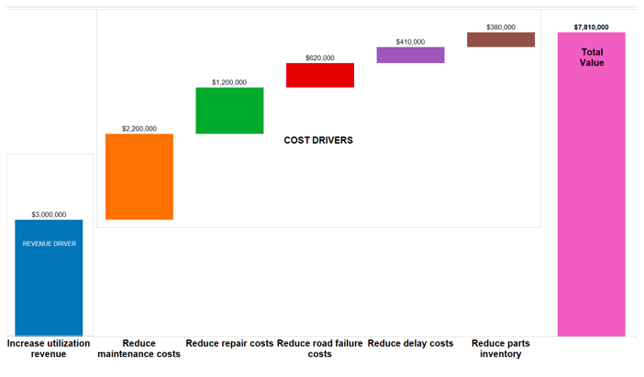 In Part One of this article, we laid the groundwork by introducing the creation process, discussing how to frame the Quantified Value Proposition (QVP) to be more valuable to your customer, and describing how to locate the necessary data to create it.
In Part One of this article, we laid the groundwork by introducing the creation process, discussing how to frame the Quantified Value Proposition (QVP) to be more valuable to your customer, and describing how to locate the necessary data to create it.
Now, we will dive into quantifying your offer’s benefits, validating and improving the QVP.
Quantifying the Benefits
They say the best things in life are free, but that’s rarely the case in business. In a business context, the best things are worth far more than you paid.
That’s the basic concept behind quantifying the benefits of a QVP.
The goal is to identify value drivers (areas in the process where customers gain monetary value) and clearly define how your offering achieves these positive results.
Value drivers fall into two basic categories:
- Those that enable your customer to earn more money (boosting revenue, enhancing market share, improving production)
- Those that enable your customer to reduce costs (cutting expenses, creating efficiency, reducing downtime)
Once these value drivers are identified and grouped accordingly, you need to attach a legitimate dollar value to each benefit based on how it eases the pain your customer is experiencing.
Some basic data points that can inform this discussion are:
- Production figures (total units, units per hour, etc.)
- Operating expenses (over a long period)
- Total hours devoted to each segment of the production process
- Wasted effort / rework / defects
- Common upgrade requirements
- Total hours spent learning new technology/upgrades, etc.
Using this data along with financial information gathered directly from the client or via detailed industry benchmarking, you can assign a realistic dollar amount to each value driver.
Below find an example of a completed QVP. Each feature has been mapped to a customer benefit and each benefit has been mapped to a quantifiable value driver.

Then we quantify each value driver by estimating how our solution helps the customer reduce cost or increase revenue. See previous post for an example of how to build a formula to quantify value.
Now you have a Quantified Value Proposition - actual dollar figures broken up by value driver that can easily be compared to the cost of your solution to help the customer see the value of what you’re offering.

But you’re not done yet.
Validating and Continually Improving the QVP
Once the research has been completed and the QVP is put to work by the sales team, it may be tempting to put your feet up and celebrate the completion of such an important task.
But really, it’s just the beginning.
While the QVP represents your very best efforts to synthesize available data, market knowledge, and other factors into a realistic dollars-and-cents explanation for the value of your offering, it’s still just a hypothesis until it’s fully tested.
The testing occurs as the sales team takes the QVP to customers and starts discussing it in real-world sales situations.
Often, customers will push back when presented with various assumptions or figures presented in the QVP. This is excellent feedback, because it helps to inform and improve the QVP every time it happens. This is actually an excellent argument for taking the time to create interactive value calculators that allow the salesperson and prospect to alter assumptions on the fly. An agile approach to calculating different scenarios helps hone the figures in the QVP to be more uniquely applicable to that customer.
Customers who move forward and purchase the solution can then become your best sources of continual improvement as they share their success. Obtaining feedback and analytics from ongoing use is priceless data.
Hopefully, this rundown helped clear up some of the mystery behind how a QVP is created through strategic research and data analysis. If you’d like further guidance in using data to create your own QVP, please contact EMM Group for assistance.
Roberto is a Manager at EMM Group and is a marketing and value based pricing expert with 15 + years of experience helping B2B enterprises drive profitable growth. You can connect via e-mail at robertorivera@emmgroup.net


